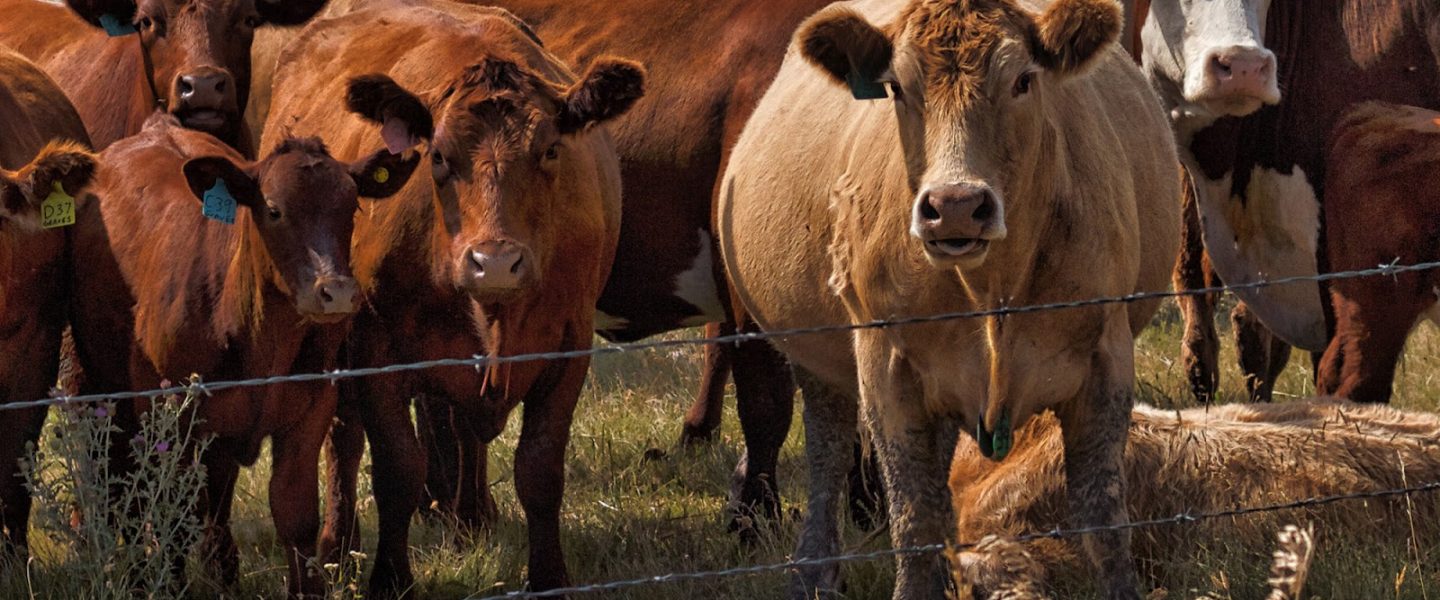The Inflation Reduction Act was supposed to reduce emissions from food. Here’s where the money went, and why some say the bill falls short.
|
Listen To This Story
|
Last year, President Biden’s administration was lauded by climate-conscious constituents for passing the Inflation Reduction Act, a landmark climate bill. And it’s true — the legislation made huge progress in clean energy investments, with a goal to reduce US greenhouse gas emissions by 40 percent by 2030. Since about 11 percent of US emissions come from the food system, climate advocates hoped the IRA would help reduce agriculture emissions, too.
But is the IRA on track to make a dent in the almost 700 million tons of carbon dioxide equivalent emitted from the US agricultural sector each year? While it’s too soon to know if ag emissions are actually falling, the IRA may not be poised to slash emissions from the food system at all: One report out this month from the Environmental Protection Agency found that the IRA is on track to slash emissions from the power generation sector, residential and commercial buildings, and industry and transportation, but did not mention reductions in emissions from agriculture or livestock.
According to environmental advocates and scientists, the landmark bill may even include incentives that will increase emissions from the sector.
“It’s too early to say whether or not the IRA is really having an impact. But it’s not designed to have an impact, because the standards are so low and the carrots are so many,” says Mark Rifkin, a policy specialist at the Center for Biological Diversity, an environmental advocacy group.
An Abundance of Carrots
In total, the IRA allocated about $40 billion to the US Department of Agriculture, the agency responsible for both regulating and promoting the country’s farm sector. All that money went toward existing programs, with by far the most money allocated to just three programs: the Environmental Quality Incentives Program (EQIP), Empowering Rural America (New ERA), and the Regional Conservation Partnership Program (RCPP).
The immense funding made available to these programs is in part meant to address high demand among farmers to participate. But the IRA is also a bill that’s entirely incentives, rather than regulations, which some environmental advocates say means the bill isn’t designed to slash ag emissions at all.
“An incentive only works if there’s a stick behind it,” says Rifkin.
There’s also a stark difference in the way that the IRA treats energy and agriculture. The bill offers an abundance of incentives for alternatives to fossil fuels, such as solar energy and home electrification, but no incentives for alternatives to animal agriculture — which is responsible for around 14 percent of all greenhouse gas emissions. There were no incentives to nudge consumers towards more plant-based diets, for instance, or for farmers to grow more plant-based ingredients like peas or mung beans. Instead, the IRA offers more money to large, concentrated animal farming operations (also known as CAFOs) in the hopes that they’ll change their practices voluntarily.
“Fundamentally, with a carrot approach, the only way that it should be justified to be spending conservation dollars on CAFOs is if we’re supporting those CAFOs to transition away from that model altogether. And the IRA does not do that,” says Chloe Waterman of Friends of the Earth, an environment and agriculture advocacy organization. “By taking this kind of carrot-only approach, [the IRA] isn’t well matched to the problem of factory farming.”
New Money, Old Problems
To some, the IRA falls short in cutting agriculture emissions because it fails to adequately address emissions from livestock, and that’s in large part because existing USDA programs remain ineffective at that task. “What we’re doing is we’re giving extra money to programs that are structurally incapable of addressing pollution from livestock,” says Silvia Secchi, a natural resources economist at the University of Iowa.
“USDA conservation programs are a pretty mixed bag when it comes to their efficacy,” says Waterman.
For example, EQIP, the program tasked with helping farmers improve soil health and air and water quality, received over $8 billion in new funding even though it has been slammed as ineffective against climate change by environmental advocates. One analysis of USDA data from the Environmental Working Group, for example, found that only about a fifth of EQIP spending goes toward practices that reduce greenhouse gas emissions.
One reason for the program’s inefficacy is that it subsidizes animal agriculture, and, therefore, the emissions-intensive practices that come along with it. By law, 50 percent of EQIP funding is earmarked for the meat and dairy industry, though the upcoming Farm Bill could change that. But much of that funding for meat and dairy producers goes toward manure management practices such as installing manure digesters: contraptions meant to trap methane, a potent greenhouse gas, from manure. That methane is then used as fuel or sold to fuel companies.
While that may seem like a climate solution on its face, environmental advocates worry that the additional revenue stream farmers get from selling methane may encourage farmers to actually grow their herd sizes, increasing pollution problems (digesters don’t get rid of the manure, which has to eventually go somewhere). Plus, these machines are expensive and typically only affordable with public or private funding. The Rural Energy for America Program, which received more than $1.7 billion from the IRA, also subsidizes biogas production, while the New ERA program, which received $9.7 billion, incentivizes electricity production from biomass, creating “perverse incentives” for farmers who may end up increasing the size and intensity of their animal operations, says Waterman.
“They’re basically farming methane. To the point that farmers have actually said, we’re not only producing hogs or cattle or dairy, we’re actually methane producers,” says Rifkin. There are no incentives in the IRA to reduce herd sizes or the number of manure lagoons that US farmers have.
While about 8 percent of US methane emissions come from livestock manure, another 25 percent is released when cows belch — known as enteric methane. In August, the USDA announced it would use $25 million of IRA funding to support ongoing trials testing the use of feed supplements, some of which are derived from seaweed, meant to reduce enteric methane. It’s too soon to tell if this investment will have much of an impact on emissions, but for now, any modest reductions are limited to feedlots — where cows only spend a small portion of their lives — and the US farm system is currently far from scaling up the practice.
“The Biden administration’s general approach is that we’re going to be able to innovate and engineer our way out of this climate crisis,” says Rifkin. “But what’s the environmental impact of, say, quadrupling our seaweed production?”
Measurements and Manure
To make meaningful cuts to emissions in the agriculture sector, a better accounting of emissions is sorely needed, says Secchi. But the IRA’s funding also doesn’t give meaningful guidance or support to measurement, either, she says.
The USDA generally measures its efficacy through so-called “bottom-up” measurements, which estimate greenhouse gas emissions based on a number of farm-specific factors such as herd size and type of manure management. But those calculations often aren’t accurate when compared to “top-down” measurements, which take actual readings of emissions from farms in the atmosphere. Without those “top-down” measurements, it’s especially hard to enact meaningful policies or know if policies are working to slash emissions, says Secchi.
The USDA will use $300 million from the IRA to develop a more unified approach to measurement and monitoring across its programs. Of the nine projects named in the draft strategy, three mention livestock emissions. But to Secchi, the projects are too specific to certain farming practices, and nothing in the USDA’s plan indicates that it will take a holistic approach to measurement — one that actually tracks changes in all emissions over time among farms that do and do not receive payments from USDA programs.
“Their focus is not on really getting a good handle on the baseline emissions, the focus is on proving that the things they’re going to pay for are good,” she says.
To Rifkin, existing USDA programs lack teeth due to the USDA’s “double mandate” — that the agency is both responsible for regulating the agriculture industry and promoting it. The best ways to reduce emissions from agriculture are to implement policies that reduce demand for animal products and to regulate, rather than incentivize, the animal agriculture industry, he says.
“There are some good tidbits sprinkled in the IRA that could produce some marginally meaningful improvements, but it’s not going to be enough,” he says.
This story by Grace van Deelen was originally published by Sentient Media and is part of Covering Climate Now, a global journalism collaboration strengthening coverage of the climate story.





